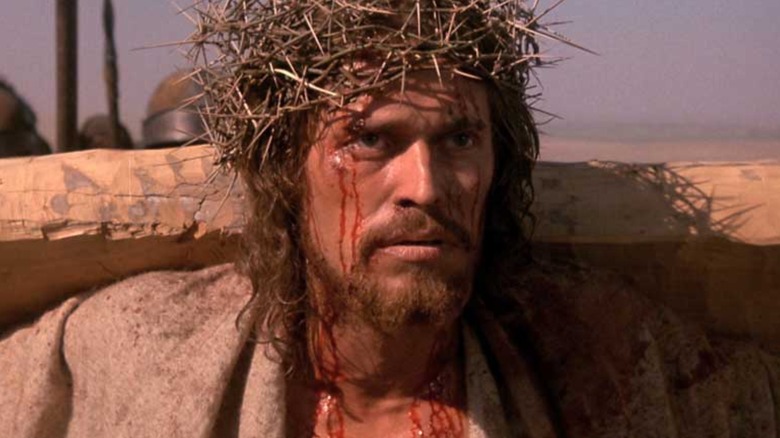Cookies help us deliver our Services. By using our Services, you agree to our use of cookies. Learn More.
Martin Scorsese’s Most Controversial Movie Was Banned In Multiple Countries
To call Martin Scorsese one of the most celebrated and influential filmmakers of all time would be an understatement. For decades, the visionary director has put out some of the finest cinematic works ever, from “Raging Bull” to “Taxi Driver” to “The Departed,” while making some fun cameos in his films from time to time. At the same time, while Scorsese is an incredibly important figure in the grand scheme of silver screen history, his name hasn’t given him a free pass to release whatever he pleases without fear of backlash. For example, one of his features was notably banned in multiple countries.
In 1988, Scorsese’s religious epic “The Last Temptation of Christ” arrived in theaters, with Willem Dafoe portraying Jesus Christ as he evades the many temptations of the world. It’s an impressive cinematic feat and a standout in Scorsese’s filmography, but not everyone sees it as a triumph. Countries including Greece, South Africa, Turkey, Mexico, Chile, the Philippines, Singapore, and Argentina have previously or continue to censor or even ban the film. Some cities within the United States, like Savannah, Georgia, and Santa Ana, California, did the same. It’s generally cited as a blasphemous production, hence these actions against it.
The outcry against “The Last Temptation of Christ” isn’t unique, as there are many examples of people who were furious that certain movies were made. Unfortunately, some in the religious community took their dislike of it a step too far, turning to violence.
Disapproval of The Last Temptation of Christ turned into violence
Overall, Martin Scorsese’s intention with “The Last Temptation of Christ” wasn’t to rile up the religious community or make a mockery of religion as a whole. The film actually begins with text that reads, “This film is not based on the Gospels, but upon the fictional exploration of the eternal spiritual conflict.” Nevertheless, devout believers took offense to what the movie has to offer, rejecting it wholeheartedly and urging others to do the same. Simultaneously, some turned to violence in hopes of stopping the film in its tracks.
On October 22, 1988, “The Last Temptation of Christ” was screened at the Saint Michel Cinema in Paris, France, when disaster struck. An integralist Catholic group had planted an incendiary device in one of the rooms of the theater, which ignited around midnight as the film was playing. By the time the fire was put out, 13 people were injured with four sustaining severe burns, and the building itself was heavily damaged. Several suspected perpetrators were later taken into custody and the Saint Michel Cinema was repaired and reopened three years later.
It’s one thing to dislike or disapprove of a piece of art, calling for it to be censored or banned, but premeditated violence is wholly uncalled for. Thankfully, no lives were lost in the Saint Michel Cinema attack, but the event remains a stain on the legacy of “The Last Temptation of Christ” — a movie about the Bible that you should add to your must-watch list if you’ve never seen it.



